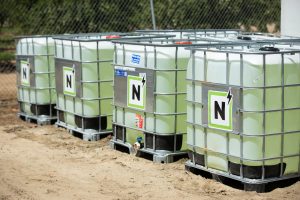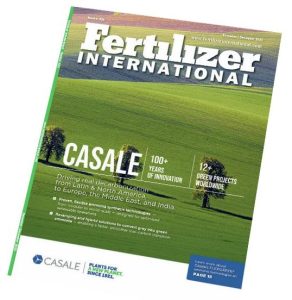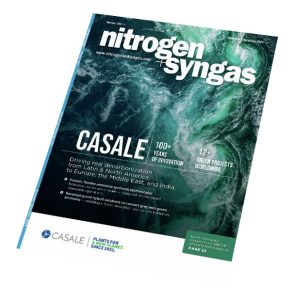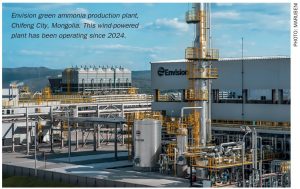
Nitricity raises $50M to go global
Nitricity has secured $50 million in funding and commenced building a liquid fertilizer production plant in Delhi, California.

Nitricity has secured $50 million in funding and commenced building a liquid fertilizer production plant in Delhi, California.

Sustainability consultancy ERM has been has been tasked with developing a low-carbon roadmap for the potash and phosphate industry.

Could demand mandates help the build the market for green fertilizers – by placing mandatory purchasing requirements on large-scale end users?

John Carr, Lei Zhang & Yu Zheng of Syensqo review currently available decadmiation techniques, including the company’s ACCO-PHOS® technology.

As I write this editorial, the 30th meeting of the Conference of the Parties (COP) to the UN Framework Convention on Climate Change – aka COP-30 – is taking place in Brazil. It is fair to say that the attempt to try to restrict a large greenhouse gas-driven temperature rise across the planet has become one of the defining issues of our age, and particularly for an energy-intensive industry such as our own, responsible as it is for up to 2% of global carbon and carbon equivalent emissions. The move towards lower carbon intensity production of hydrogen, ammonia and methanol, via carbon dioxide capture and sequestration, gasification of biomass or waste, or electrolysis of water using renewable power, has come to dominate our news coverage, and in this issue we also carry articles on the state of play of both ‘blue’ and ‘green’ ammonia production, as well as technology for ‘cracking’ ammonia back to hydrogen and nitrogen for its potential use as a hydrogen carrier.

Ammonia producer CF Industries says that it has shipped its first cargo of low-carbon ammonia from its Donaldsonville, Louisiana facility. The 23,500 tonne shipment was purchased by commodities specialist Trafigura to be used in Antwerp, Belgium by engineering materials firm Envalior in the production of low-carbon caprolactam.

Topsoe has signed an offtake agreement to provide its Solid Oxide Electrolyser Cell (SOEC) technology for Forestal’s Triskelion green methanol plant in Galicia. The SOEC’s will be delivered from Topsoe’s manufacturing facility in Herning, Denmark, which is nearing the final stage of readiness for industrial-scale production. The agreement, which includes a 10-year service warranty program, builds on Topsoe’s existing agreement with Forestal, announced in December 2024, to provide its e-methanol synthesis technology, catalysts and engineering for highly efficient e-methanol production.

Kevin Rouwenhorst of the Ammonia Energy Association (AEA) provides an overview of green ammonia projects and the associated technology options.

NextChem subsidiary MyRechemical has been selected by Mana Group and Equinor to conduct a feasibility study for a waste-to-methanol plant at Norway's Mongstad refinery. The project will use NX Circular™ technology to convert urban and industrial waste into chemical grade syngas which will be further processed to produce low-carbon methanol. The facility is expected to produce circular methanol with a low carbon footprint, eligible under the EU Renewable Energy Directive criteria. This methanol could initially replace marine bunker fuel to meet the targets of the FuelEU Maritime regulation, exempting final users from buying ETS credits and paying penalties, and potentially later be used as feedstock for methanol-to-jet facilities to produce sustainable aviation fuel (SAF) compliant with FuelEU Aviation regulation.

ClassNK has added Japan's first hydrogen-fuelled tug Ten-Oh to its register, built by Tsuneishi Shipbuilding Co., Ltd. This vessel was developed and built under the 'Nippon Foundation Zero Emission Ships Project', a grant program by The Nippon Foundation aimed at developing ships with zero CO2 emissions. Based on discussions among the parties involved during the planning stage of the vessel, ClassNK reviewed the safety requirements and countermeasures for hydrogen-fuelled ships by applying Part GF of its 'Rules and Guidance for the Survey and Construction of Steel Ships' etc. These reviews focused on issues such as preventing explosions caused by the high ignitability of hydrogen and mitigating the potential impacts of hydrogen fuel leakage on crew members and the environment.